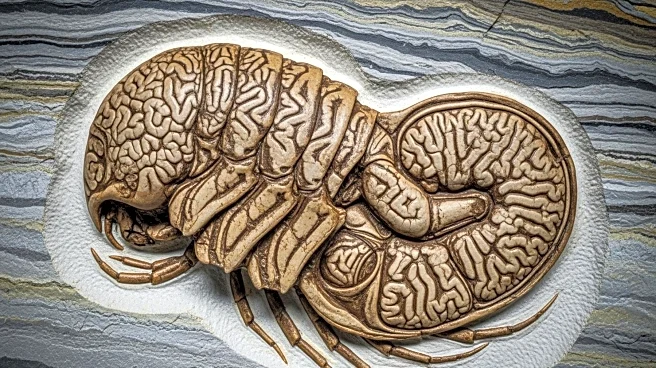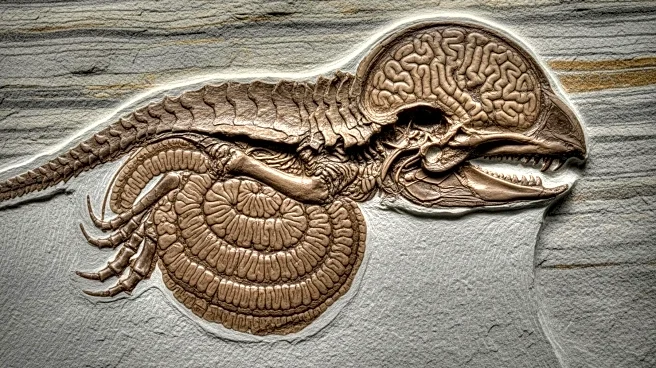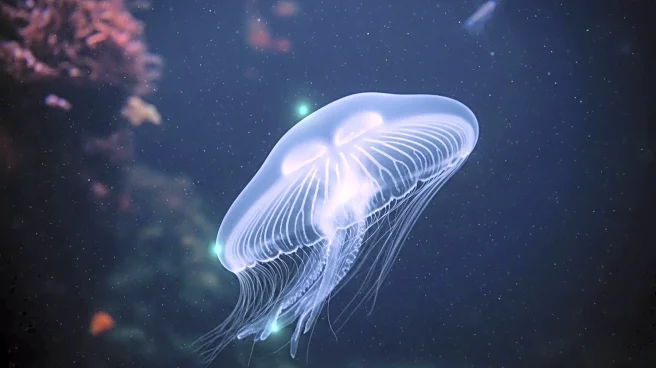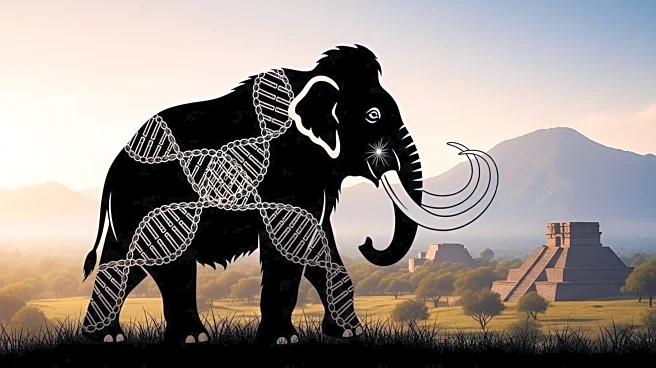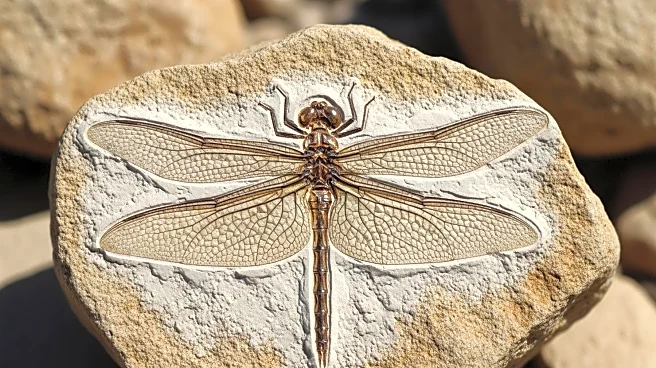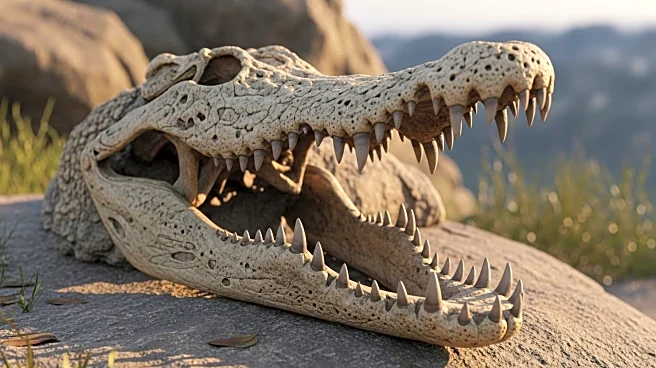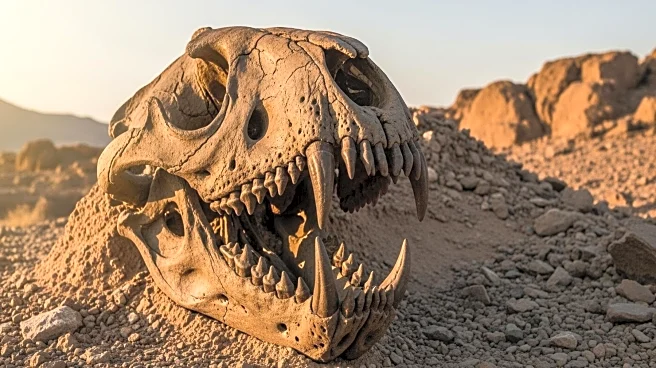What's Happening?
A team of scientists has uncovered a remarkably preserved 520-million-year-old fossil of an arthropod larva, providing unprecedented insights into early life forms. The fossil, discovered using synchrotron X-ray tomography, reveals intricate details such as a brain, digestive glands, a primitive circulatory system, and traces of nerves supplying the larva's legs and eyes. This discovery challenges previous assumptions about the complexity of early arthropods, a group that includes modern-day insects, crabs, and lobsters. The fossil's preservation allows researchers to draw evolutionary connections between ancient and contemporary arthropods, highlighting the development of the protocerebrum, a brain region crucial for the survival of these creatures in diverse environments.
Why It's Important?
The discovery of this fossil is significant as it provides a rare glimpse into the evolutionary history of arthropods, a group that plays a vital role in today's ecosystems. By understanding the complexity of early arthropods, scientists can better comprehend the evolutionary processes that have shaped biodiversity over millions of years. This find also underscores the importance of fossil preservation in studying ancient life forms, offering valuable data that can inform current biological and ecological research. The insights gained from this fossil could influence future studies on the adaptability and resilience of arthropods, which are crucial for maintaining ecological balance.
What's Next?
Researchers are expected to continue analyzing the fossil to uncover more details about the evolutionary traits of early arthropods. This could lead to further studies on the development of complex biological systems in ancient organisms. The findings may also prompt additional exploration of fossil sites to discover similar specimens, potentially expanding our understanding of the Cambrian Explosion—a period marked by rapid diversification of life forms. As scientists delve deeper into the evolutionary links between ancient and modern arthropods, these studies could have implications for fields such as evolutionary biology, paleontology, and ecology.
Beyond the Headlines
The discovery raises intriguing questions about the conditions that allowed such exceptional preservation of soft tissues in fossils. Understanding these conditions could enhance fossilization techniques, aiding in the recovery of more detailed specimens from other periods. Additionally, the find highlights the ethical considerations in fossil research, emphasizing the need for responsible excavation practices to preserve these invaluable scientific resources. The cultural impact of such discoveries also fosters public interest in paleontology, encouraging educational initiatives and inspiring future generations of scientists.
